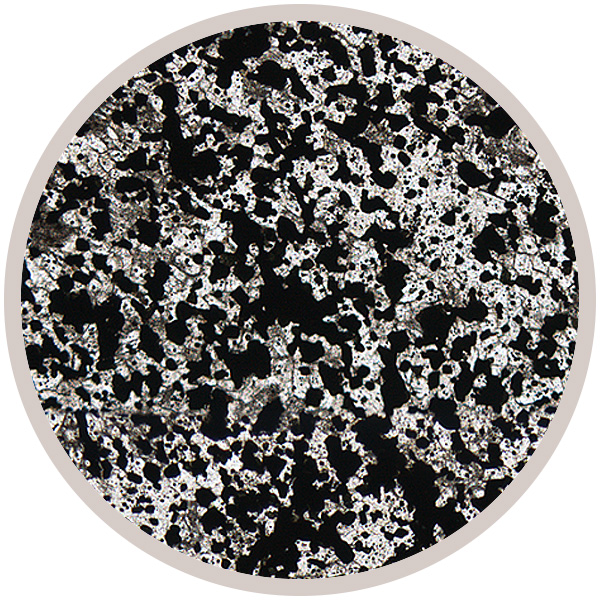
Fact sheet
This corundum (sapphire)-bearing sample has a complex history that began with the eruption of a Paleocene basalt lava. It is related to the major volcanic centre on the Isle of Mull, but was erupted on the mainland of Scotland near the village of Kilchoan (Ardnamurchan peninsula). Following its eruption the basalt was weathered, and this converted it into a red volcanic soil known as a 'bole'. Continuing volcanism in the area resulted in the emplacement of a gabbroic intrusion adjacent to the bole and subjected it to intense thermal metamorphism. In places the original minerals were completely recrystallised and an assemblage consisting of blue corundum (sapphire), a nearly opaque hercynite spinel and anorthite (calcic plagioclase) was formed. However, the recrystallisation is only on a very small scale, there is no large sapphire deposit at Kilchoan!
In thin section remnants of the original weathered basalt can still be seen as dark patches suggesting that the recrystallisation was on a very local scale. The corundum appears as pale blue high relief grains, commonly adjacent to the darker unrecrystallised opaque rich areas of the thin section. The pale areas are composed of a groundmass of equigranular plagioclase and opaque minerals. Large corundum grains are tablular with cracks, and low second order birefringence colours.
The United Kingdom Virtual Microscope (UKVM) collection consists of igneous, sedimentary and metamorphic rocks from around the UK.
It is intended as a teaching resource, helping to tell the story of the common rock types and how they form, and reflecting the history of the UK at the margins of the continent of Europe. The collection is a series of teaching sets, for example igneous rocks from the North Atlantic Igneous Province and SW England; high-temperature metamorphic rocks from Scotland and low-temperature metamorphic rocks from Wales; and sedimentary rocks, including English limestones and sandstones.





